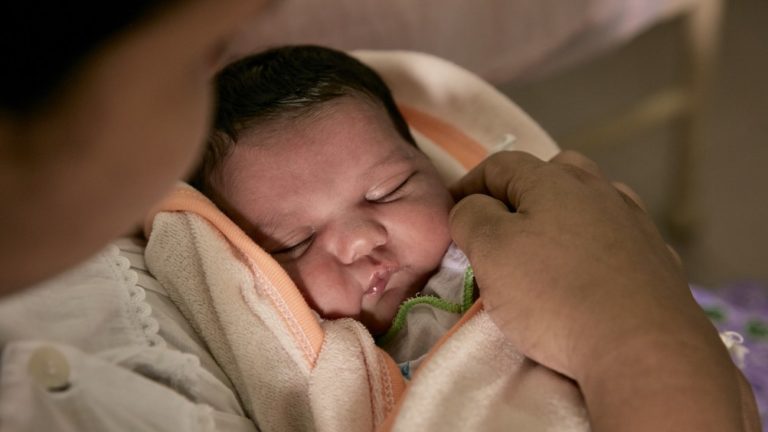By Hayley MacMillen | Allure | 14 November 2017
Diabetes triggered during pregnancy, or gestational diabetes, now affects an estimated one in every seven births.
That number is only expected to rise around the world. Gestational diabetes, which causes dangerously high blood sugar levels during pregnancy, typically develops in a pregnancy’s second half and usually doesn’t cause symptoms.
Gestational diabetes goes away after delivery, but it can lead to dangerous and even deadly consequences for both mother and baby. Among them are preeclampsia, a potentially fatal high blood pressure condition; preterm delivery; too-high birth weight; hypoglycemia in babies; and a higher risk of developing type 2 diabetes for both mother and baby.
“Many people don’t realize that this is one of the common complications that women face during pregnancy,” says Katja Iversen, the president and CEO of global health advocacy organization Women Deliver. “It can leave them and their children at much higher risk of early death and life-long health issues, despite the fact that it can be caught by a simple test.”
In other words, gestational diabetes is a big deal — which is why Women Deliver teamed up with the World Diabetes Foundation to highlight this silent maternal health threat. The two organizations’ Diabetes in Pregnancy Photo Contest, launching on World Diabetes Day on November 14 and accepting submissions until January 17, seeks photographers telling the stories of people affected by diabetes during pregnancy in India, China, and Nigeria. To kick off the contest, Women Deliver and the World Diabetes Foundation have released a photo series by photographer Jesper Jørgensen that tracks the journey of Nayani Nimeshik, a 21-year-old new mother from Sri Lanka. Scroll through to discover what happened after she received a troubling glucose test — and what can be done to fight gestational diabetes around the world.

Women Deliver / Jesper Westley Jørgensen
Gestational diabetes is on the rise.
At De Soysa Hospital for Women in Sri Lanka, Nayani Nimeshika, 21, is one of the growing number of women treated for gestational diabetes. Gestational diabetes is on the rise, now affecting one in seven births around the world. Three-quarters of the women affected live in low- and middle-income countries, where pregnancy and childbirth is already one of the most dangerous times in a woman's life.
If diabetes in pregnancy is so common, why don't women know about it?
With no family history of diabetes, Nayani never thought she'd be at risk. Three months into her pregnancy during a routine checkup at her local clinic, Nayani's latest blood glucose test came back. That's when everything changed.
After being diagnosed with gestational diabetes, Nayani was frightened.
But she put fear aside and took action: “Whatever I have to do for the unborn child in order not harm it, I will do,” she said. With diet change, an exercise plan, and insulin, Nayani managed her diabetes well enough to have a normal birth and healthy baby girl. Unfortunately, stories of gestational diabetes don't always end this happily.
For most women, gestational diabetes doesn’t have any noticeable signs or symptoms.
And in many countries, screening for gestational diabetes is not a part of standard prenatal care. The diagnostic needs of pregnant women in low- and middle-income countries are often ignored, even though those regions account for 85 percent of babies born every year and 88 percent of gestational diabetes cases.
Nayani was fortunate enough to attend a clinic that did consistently screen its patients.
Without this vigilance, she may have never known of her condition and never accessed De Soysa Hospital for treatment — and her outcome might have been very different.
Gestational diabetes can set off a cycle of intergenerational ill health.
Children born to mothers with gestational diabetes are four to eight times more likely to develop type 2 diabetes later in life, while baby girls of mothers with gestational diabetes are more like to suffer similar challenges during their own pregnancies — thereby perpetuating a vicious cycle of intergenerational ill health. It's crucial that Nayani's daughter is regularly monitored.
Gestational diabetes can affect many aspects of pregnancy and childbirth.
Gestational diabetes, for example, may necessitate delivery by cesarean section.
Addressing gestational diabetes is a team effort.
Here, Nayani smiles with her baby and nurses Kalani Rajasekara, right, and A.A.I. Shalika. Nurse Rajasekara has been a Diabetes Educator Nursing Officer for three years in a project established the Sri Lanka Medical Association under the Diabetes Prevention Task Force with the help of the World Diabetes Foundation. After attending a World Diabetes Day program course, she was inspired to become an expert on diabetes management to better serve her patients. "I feel I am making a difference," she says.
The education women receive while pregnant continues to impact their health after they give birth.
Here, Nayani checks on her daughter, protected beneath a mosquito net. After the birth of her child, she says she is determined to continue the health changes she started during pregnancy.
Gestational diabetes rates are rising worldwide, and Sri Lankans are especially at risk.
At De Soysa Hospital for Women in Sri Lanka, health workers are desperately trying to turn this trend around. The screening and care they provide is likely to have a multi-generational impact on their patients and their families, as well as on health care systems and budgets.
The time to take action is now.
Today, it is the story of Nayani. Tomorrow, the stories of more women will follow, unless we act now to turn the tide on this silent epidemic. Find out more about gestational diabetes and what can be done to fight it here.